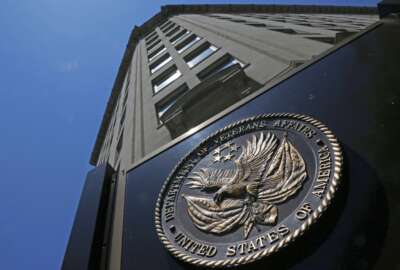IG criticizes IRS effort to enforce TikTok ban
In today's Federal Newscast: The National Security Agency issued its cybersecurity year-in-review report. A new document calls on DoD to improve its processes for...
- Federal employees are officially getting a big pay raise in the new year. President Biden signed an executive order Thursday evening confirming a 5.2% average raise. That is the final step in the process for federal employees on the General Schedule to receive a pay increase in 2024. It is the largest year-over-year raise for feds in more than 40 years. It follows a 4.6% raise that kicked in this past year. The 5.2% raise takes effect in January.(Biden finalizes 2024 federal pay raise for civilian employees - Federal News Network)
- An IRS watchdog says the agency needs to do more to enforce a ban of the video app TikTok. The IRS blocked access to TikTok on more than 6,300 of its employees’ mobile devices last year. But the Treasury Inspector General for Tax Administration found about 900 employees in the IRS Criminal Investigations Unit could still access TikTok across 2,800 devices. Congress banned TikTok on government devices as part of a comprehensive spending bill for fiscal 2023 and the Office of Management and Budget, in February, gave agencies guidance on how to enforce the ban.
- Tens of thousands of blue-collar federal employees could see changes to the way they are paid, if a proposal from the Office of Personnel Management becomes finalized. An advisory council approved the draft proposal on Thursday. It would align the pay locality map for blue-collar feds with the map for General Schedule employees. If finalized, 15,000 feds would see higher pay rates. Despite the committee's approval, some members are still concerned about the implementation of the proposal. They say more work is needed before OPM should continue to pursue the reforms.(Proposal to reform pay for blue-collar feds gets committee approval, but concerns remain - Federal News Network)
- The Department of Veterans Affairs is looking at facial recognition to help its health care employees log in more quickly. In 2024, the VA is planning to test this technology at VA hospitals, particularly for frontline clinicians working in intensive care units. The pilot program, if successful, would give VA health care employees an alternative to using their personal identity verification cards to securely log onto the department’s network. VA Chief Information Security Officer Lynette Sherrill said the goal is to help VA clinicians log into their workstations faster and spend more time treating veterans. “Much like we use facial recognition to log into an iPhone today, that’s the type of experience we want to give VA clinical staff,” Sherrill said.(VA plans facial recognition pilot for health care employees to reduce log-in burden - Federal News Network)
- The National Security Agency is out with its annual cybersecurity year-in-review. In 2023, NSA establish a new Artificial Intelligence Security Center, detected alleged Chinese cyber intrusions into U.S. critical infrastructure, and expanded its partnerships across multiple fronts. The NSA also saw a 400% increase in enrollments by defense contractors to the agency’s no-cost cybersecurity services. (2023 NSA Cybersecurity Year In Review - National Security Agency)
- The Air Force’s program to bring in cyber talent has been successful, but also highly competitive. Senior leaders have just finished their third cyber direct commissioning board, to select applicants who will go through the program next year. The board received over 100 applications, with only 10 spots to fill. The direct commissioning program is designed to tap talented enlisted members, as well as civilians, and let them commission at a higher rank using constructive service credit. The Air Force Reserve is also rolling out the program to its reservists. That program will allow participants to serve while also maintaining their employment. (Air Force’s cyber program is highly competitive, only few get in - Federal News Network)
- Agencies are being held accountable for meeting Section 508 digital accessibility requirements. Section 508 is part of a 1998 amendment to the Rehabilitation Act of 1973, which requires all federal electronic content to be accessible. A new White House memo directs agencies to assign a Section 508 program lead, set up a digital accessibility complaint hotline on their websites, and conduct a holistic review of their technology accessibility policies. About 25% of the U.S. adult population lives with a disability.(OMB issues digital accessibility guidelines, tells agencies to set up public feedback mechanism - Federal News Network)
- The Defense Department said it is improving its processes for reducing civilian casualties during military operations. A new document called DoD Instruction on Civilian Harm Mitigation and Response lays out who carries responsibility for civilian harm response within the military. It also orders the DoD to identify, develop and acquire intelligence, surveillance and reconnaissance capabilities needed to improve the processes for civilian harm reduction. In addition, the new document orders the DoD to develop a skilled workforce to support the effort. (DoD releases civilian harm mitigation instructions - Defense Department)
Copyright © 2024 Federal News Network. All rights reserved. This website is not intended for users located within the European Economic Area.
Peter Musurlian
Peter Musurlian is a producer at Federal News Network.
Follow @PMusurlianWFED
Related Stories
OMB issues digital accessibility guidelines, tells agencies to set up public feedback mechanism
Related Topics






